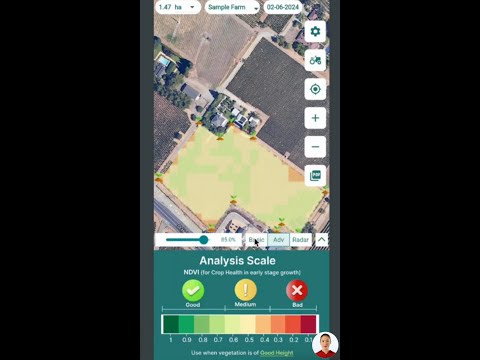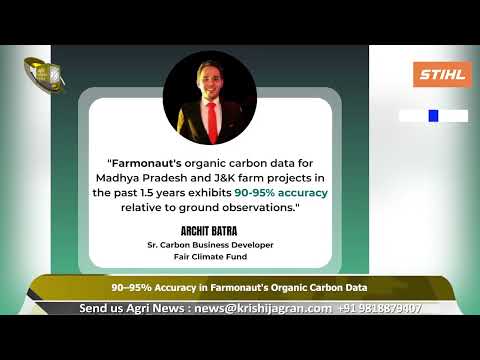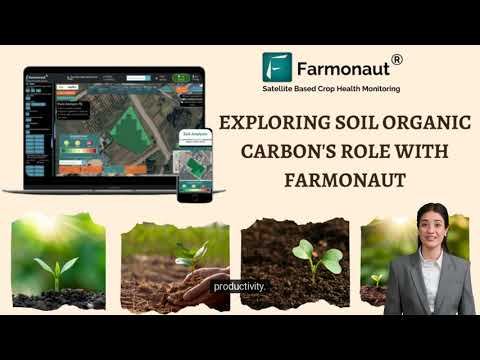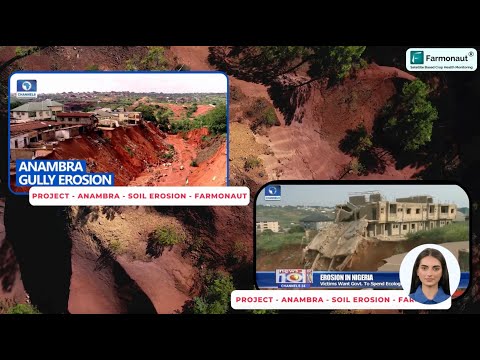Protecting Peatlands: A Global Climate Solution for Carbon Storage and Biodiversity Conservation

“Peatlands cover only 3% of Earth’s surface but store more carbon than all forests combined.”
In our rapidly changing world, the urgency to address global climate change has never been more pressing. As we explore innovative solutions to mitigate the impacts of rising temperatures and greenhouse gas emissions, one often overlooked ecosystem stands out as a potential game-changer: peatlands. These remarkable wetlands, though covering just a fraction of the Earth’s surface, play a crucial role in carbon storage and biodiversity conservation. In this comprehensive exploration, we’ll delve into the critical importance of peatlands, the challenges they face, and the urgent need for their protection.
Understanding Peatlands: Nature’s Carbon Vaults
Peatlands are a type of wetland ecosystem characterized by the accumulation of partially decayed organic matter, known as peat. These unique terrestrial wetlands are found across the globe, from the vast expanses of the northern hemisphere to the tropical regions near the equator. What makes peatlands truly remarkable is their unparalleled ability to store carbon.
- Peatlands cover approximately 3% of the Earth’s land surface
- They store an estimated 600 billion tons of carbon
- This carbon storage exceeds that of all the world’s forests combined
The significance of peatlands in the global carbon cycle cannot be overstated. As climate change accelerates, these ecosystems serve as critical natural buffers, keeping enormous amounts of carbon dioxide out of the atmosphere. However, despite their importance, peatlands face numerous threats and remain largely unprotected.
The Alarming State of Peatland Conservation
A groundbreaking study titled “Mismatch Between Global Importance of Peatlands and the Extent of their Protection” has shed light on the precarious state of peatland conservation worldwide. The findings are both illuminating and concerning:
- Only 17% of global peatlands fall within protected areas
- This protection rate is significantly lower than other critical ecosystems:
- Mangroves: 42% protected
- Saltmarshes: 50% protected
- Tropical forests: 38% protected
- Nearly one-quarter of the world’s peatlands are under heavy pressure from human encroachment
These statistics reveal a stark mismatch between the global importance of peatlands and the extent of their protection. As we strive to combat climate change and preserve biodiversity, addressing this disparity must become a priority for conservation efforts worldwide.
The Role of Indigenous Peoples in Peatland Conservation
“Only 17% of peatlands are protected, while 27% are on Indigenous Peoples’ lands globally.”
One of the most striking revelations from the study is the significant role that Indigenous Peoples play in peatland conservation. The research shows that:
- 27% of global peatlands fall on Indigenous Peoples’ lands
- Over 85% of peatlands within Indigenous Peoples’ lands do not fall within other types of protected areas
- Indigenous communities have been safeguarding these ecosystems for generations
This finding underscores the importance of recognizing and strengthening Indigenous land rights as a key strategy in peatland conservation. By empowering these communities and supporting their traditional land management practices, we can enhance the protection of these vital carbon sinks.
Threats to Peatlands: A Global Challenge
Despite their importance, peatlands face numerous threats from human activities. The study highlights several key pressures:
- Agricultural expansion: 15% of peatlands have been drained for farming
- Degradation: An additional 5-10% of peatlands are degraded in some way
- Tropical peatlands: Over 40% have been degraded
- Drainage and burning: Results in enormous carbon emissions
These human-induced changes not only release stored carbon but also diminish the peatlands’ capacity to sequester more carbon in the future. The consequences of peatland degradation extend beyond climate impacts, affecting biodiversity and local water resources as well.

Global Distribution of Peatlands
Peatlands are found across various regions of the world, with some countries harboring significant portions of these valuable ecosystems. The top 10 countries with the most peatlands include:
- Canada
- Russia
- Indonesia
- United States
- Brazil
- Democratic Republic of the Congo
- China
- Peru
- Finland
- Republic of the Congo
These 10 countries contain 80% of global peatlands, with the top five accounting for 70%. This concentration highlights the need for targeted conservation efforts and international cooperation to protect these critical carbon storage ecosystems.
The Climate Impact of Peatland Degradation
The degradation of peatlands has severe consequences for global climate change mitigation efforts. When disturbed, these ecosystems release enormous amounts of greenhouse gases into the atmosphere:
- Between 1.5 and 2.5 billion tons of greenhouse gas emissions are emitted from disturbed and damaged global peatlands every year
- This is equivalent to approximately 5% of global anthropogenic CO2 emissions
- Tropical peatlands, when drained and burned, can release centuries’ worth of stored carbon in a matter of weeks
These emissions contribute significantly to global warming, underscoring the urgent need for peatland conservation and restoration efforts.
The Multifaceted Value of Peatlands
Beyond their crucial role in carbon storage, peatlands offer a range of other ecosystem services that are vital for both human well-being and environmental health:
- Freshwater storage: Peatlands contain 10% of the world’s unfrozen freshwater
- Biodiversity hotspots: Home to a wide variety of unique plant and animal species
- Flood regulation: Act as natural sponges, absorbing excess water during heavy rainfall
- Cultural significance: Many peatlands hold important cultural and historical value for local communities
Recognizing the multiple benefits of peatlands is crucial for developing comprehensive conservation strategies that address both climate change mitigation and broader environmental goals.
Innovative Approaches to Peatland Conservation
As we strive to protect and restore peatlands, innovative technologies and approaches are emerging to support these efforts. One such solution comes from Farmonaut, a pioneering agricultural technology company that offers advanced, satellite-based management solutions.
While Farmonaut’s primary focus is on precision agriculture, its technologies have potential applications in peatland conservation:
- Satellite-Based Monitoring: Farmonaut’s use of multispectral satellite images could be adapted to monitor peatland health and detect early signs of degradation.
- AI Advisory Systems: The Jeevn AI system could potentially be modified to provide insights on sustainable peatland management practices.
- Carbon Footprinting: Farmonaut’s carbon footprint tracking tools could be valuable in quantifying the carbon storage capacity of peatlands and monitoring emissions from degraded areas.
To learn more about Farmonaut’s innovative technologies, you can explore their web application or download their mobile apps:
For developers interested in integrating Farmonaut’s satellite and weather data into their own systems, the company offers an API. Detailed documentation is available in their API Developer Docs.
International Efforts and Policy Implications
Addressing the challenges facing peatlands requires coordinated international action. Several initiatives and policy frameworks are emerging to support peatland conservation:
- United Nations Framework Convention on Climate Change (UNFCCC): Peatland conservation is increasingly recognized as a critical component of national climate strategies
- Ramsar Convention on Wetlands: Provides guidelines for the wise use and conservation of wetlands, including peatlands
- Global Peatlands Initiative: A multi-stakeholder effort to save peatlands as the world’s largest terrestrial organic carbon stock
However, the study reveals that most countries still lack comprehensive peatland strategies in their national climate plans. This gap presents an opportunity for policymakers to integrate peatland conservation into broader climate change mitigation and adaptation strategies.
The Way Forward: Priorities for Peatland Protection
To effectively address the challenges facing peatlands and harness their potential as a climate solution, we must prioritize several key actions:
- Increase protected areas: Expand the network of protected peatlands to safeguard these vital ecosystems
- Support Indigenous rights: Strengthen land rights and support traditional management practices of Indigenous Peoples
- Restore degraded peatlands: Implement large-scale restoration projects to recover damaged areas
- Sustainable management: Develop and promote practices that allow for sustainable use of peatlands without compromising their ecological integrity
- Research and monitoring: Invest in scientific research to better understand peatland dynamics and improve monitoring techniques
- Public awareness: Educate the public about the importance of peatlands and their role in climate regulation
- International cooperation: Foster collaboration between countries to address transboundary peatland issues
By implementing these priorities, we can work towards a future where peatlands are recognized, valued, and protected for their crucial role in maintaining global climate stability and biodiversity.
Conclusion: A Call to Action for Peatland Conservation
The protection and sustainable management of peatlands represent a critical yet often overlooked opportunity in our global efforts to combat climate change and preserve biodiversity. As we’ve explored in this comprehensive analysis, these unique ecosystems play a disproportionately large role in carbon storage and offer a host of other environmental benefits.
The stark mismatch between the importance of peatlands and their current level of protection demands urgent action. By prioritizing peatland conservation, supporting Indigenous land rights, and implementing innovative management strategies, we can harness the power of these natural carbon sinks to mitigate climate change while preserving vital habitats and freshwater resources.
As we move forward, it’s crucial that policymakers, conservationists, and the public alike recognize the value of peatlands and work together to ensure their protection. The future of our planet’s climate may well depend on our ability to safeguard these vital ecosystems for generations to come.
Comparison of Carbon Storage and Protection Status
| Ecosystem Type | Global Surface Area Coverage (%) | Estimated Carbon Storage Capacity (Gt) | Protected Area (%) | Percentage on Indigenous Peoples’ Lands (%) | Primary Threats |
|---|---|---|---|---|---|
| Peatlands | 3% | 600 | 17% | 27% | Farming, drainage, burning |
| Forests | 31% | 450 | 38% | 22% | Deforestation, fragmentation |
| Mangroves | 0.1% | 4 | 42% | 15% | Coastal development, aquaculture |
FAQs About Peatland Conservation
Q: What exactly are peatlands?
A: Peatlands are wetland ecosystems characterized by the accumulation of partially decayed organic matter (peat) formed over thousands of years. They are found in various climates around the world, from tropical to arctic regions.
Q: Why are peatlands important for climate change mitigation?
A: Peatlands are crucial for climate change mitigation because they store vast amounts of carbon – more than all the world’s forests combined. When undisturbed, they continue to sequester carbon, acting as a natural carbon sink.
Q: What are the main threats to peatlands?
A: The primary threats to peatlands include drainage for agriculture, forestry, and peat extraction; burning for land clearance; and the impacts of climate change itself, such as increased temperatures and altered precipitation patterns.
Q: How can we protect peatlands?
A: Protecting peatlands involves a multi-faceted approach including: increasing protected areas, supporting Indigenous land rights, restoring degraded peatlands, implementing sustainable management practices, and raising public awareness about their importance.
Q: What role do Indigenous Peoples play in peatland conservation?
A: Indigenous Peoples play a crucial role in peatland conservation. Many peatlands are located on Indigenous lands, and these communities often have traditional knowledge and practices that have helped preserve these ecosystems for generations.
Q: How does peatland degradation contribute to climate change?
A: When peatlands are drained or burned, the stored carbon is released into the atmosphere as CO2, contributing significantly to greenhouse gas emissions. Degraded peatlands can become large sources of carbon emissions rather than carbon sinks.
Q: Can degraded peatlands be restored?
A: Yes, degraded peatlands can be restored through various techniques such as rewetting (raising the water table), replanting native vegetation, and implementing sustainable management practices. However, full restoration can take many years or even decades.
Q: How do peatlands compare to forests in terms of carbon storage?
A: While forests are crucial for carbon storage, peatlands store significantly more carbon per unit area. Peatlands cover only 3% of the Earth’s land surface but store more carbon than all forests combined.
Q: Are there any economic benefits to preserving peatlands?
A: Yes, preserving peatlands offers various economic benefits including flood regulation, water purification, and potential for sustainable agriculture (paludiculture). They also support biodiversity, which can benefit ecotourism and provide resources for local communities.
Q: How can individuals contribute to peatland conservation?
A: Individuals can contribute by supporting organizations working on peatland conservation, avoiding products that contribute to peatland degradation (like peat-based composts), raising awareness about the importance of peatlands, and advocating for stronger protection policies.
Earn With Farmonaut: Affiliate Program
Earn 20% recurring commission with Farmonaut’s affiliate program by sharing your promo code and helping farmers save 10%. Onboard 10 Elite farmers monthly to earn a minimum of $148,000 annually—start now and grow your income!
Additional Resources
For those interested in learning more about satellite data interpretation in agriculture and related topics, Farmonaut offers several informative video tutorials:
This video provides a comprehensive tutorial on interpreting satellite data for agricultural applications using Farmonaut’s mobile apps.
Learn about Farmonaut’s high accuracy in providing organic carbon data, which can be crucial for understanding soil health and carbon sequestration potential.
Discover the importance of soil organic carbon and how Farmonaut’s technology can help in sustainable farming practices.
This video showcases Farmonaut’s collaboration with the STEI Foundation in Africa, demonstrating the global reach and impact of their agricultural technology solutions.
By leveraging advanced technologies and data-driven insights, we can not only improve agricultural practices but also contribute to the conservation and sustainable management of critical ecosystems like peatlands. As we continue to face the challenges of climate change and environmental degradation, innovative solutions that bridge the gap between technology and nature will play an increasingly vital role in shaping a sustainable future for our planet.






